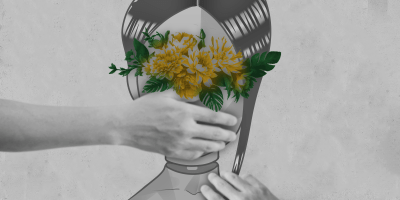
In Japan, Sakura brings new beginnings, but what does it bring to Yerevan? Planting Sakura has been part of Yerevan Municpality’s Greening Project in recent years. In 2023, the municipality issued a statement that around 2500 trees were to be replaced by other trees, part of which is the Sakura. The ecological footprint and the local climate’s compatibility with foreign species, like Sakura, should be well-studied before making such drastic and rushed changes to Yerevan’s green spaces.
In November 2023, the residents of Yerevan were outraged by the cutting down of trees around Cascade; as summers in Yerevan continuously became warmer every year, the residents and tourists sought shade to enjoy the summer breeze while being protected by the tall trees. As stated in the above statement, the municipality claims that the “replacement of old damaged and dead trees with new precious and beautiful trees” is necessary and “obligatory tree planting” measures will be taken.
The process has been ongoing; the municipality cut down trees on Tumanyan Street, including one of the most visited green spaces in Yerevan, Swan Lake. This abrupt removal of old trees raises the question of environmental sustainability versus urban beautification.
It might seem like a beneficial project to replace one old tree with a new one, however, the problem is that the new trees cannot offer as much as the old and mature trees. In a study called “Every Tree Counts,” it is shown that mature trees are able to cut down air pollution by 10 times and absorb 90 times more carbon, improving the air quality in the city. Also, the foliage of the trees that were cut down protected the residents from the dust and extreme heat by providing shade.
Even though the pink flowers are like beautiful ornaments on the trees, they last only around 10 to 14 days. Moreover, Yerevan’s climate may not be the best condition for the Sakura to thrive and be part of the biodiversity. Arsen Gasparyan, the director of A. Takhtajyan Institute of Botany National Academy of Sciences of Armenia, suggests in a statement that using species that are more familiar and durable for Yerevan and its climate would make this project more successful. “I will advise you to use the results of science,” he says as his team at the botanical garden have done extensive research on the species suitability for Yerevan’s biodiversity.
The desire to “beautify” is understandable, but it should not come at the expense of our environment’s sustainability and suitability for the city. As residents of Yerevan, it is important for us to raise our voices for more sustainable and effective urban planning. You can participate in the Save Trees Yerevan movement for advocacy and peaceful protests.
Together, we can ensure that the future of Yerevan is not only aesthetically pleasing but also environmentally resilient and sustainable.












